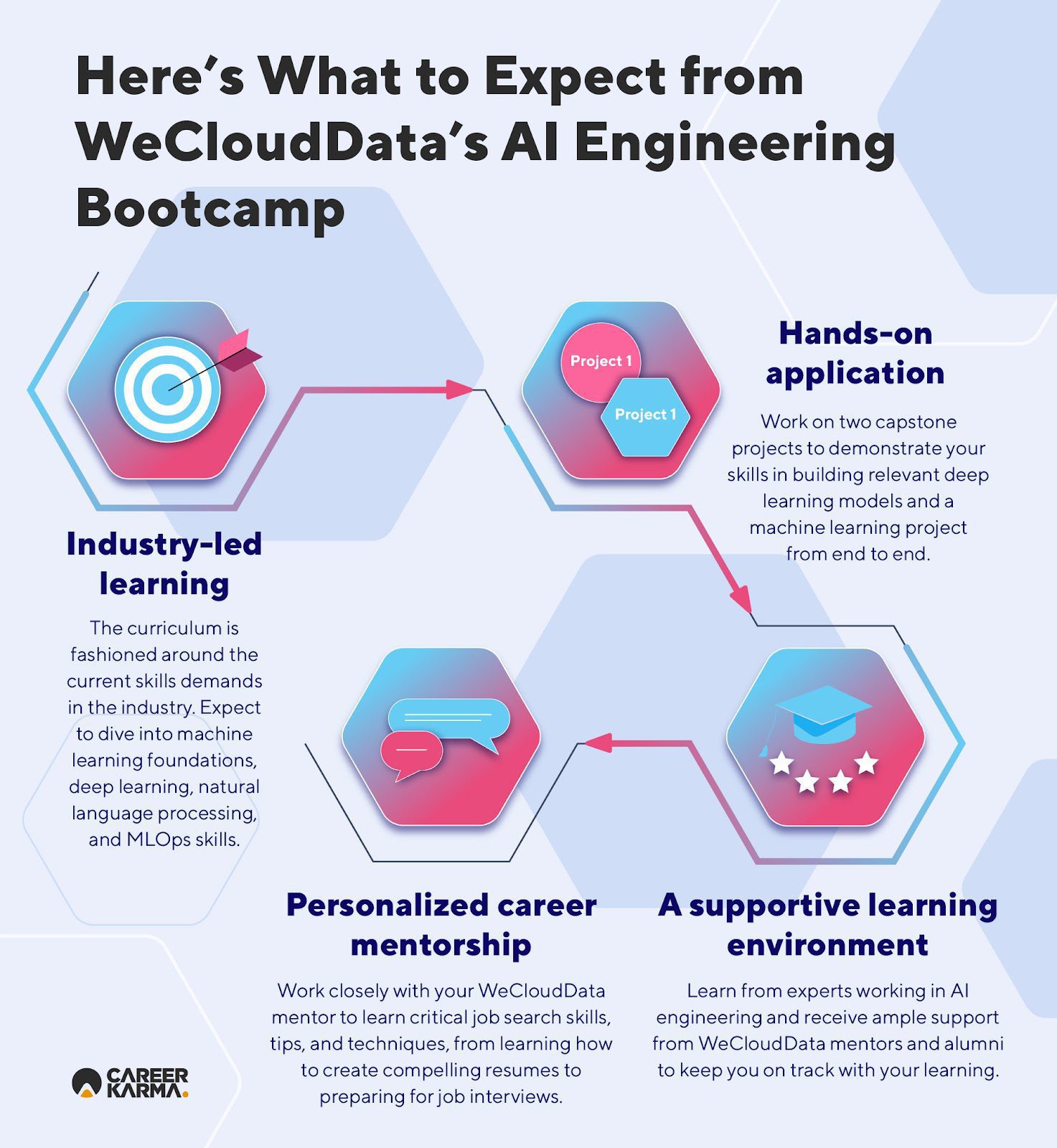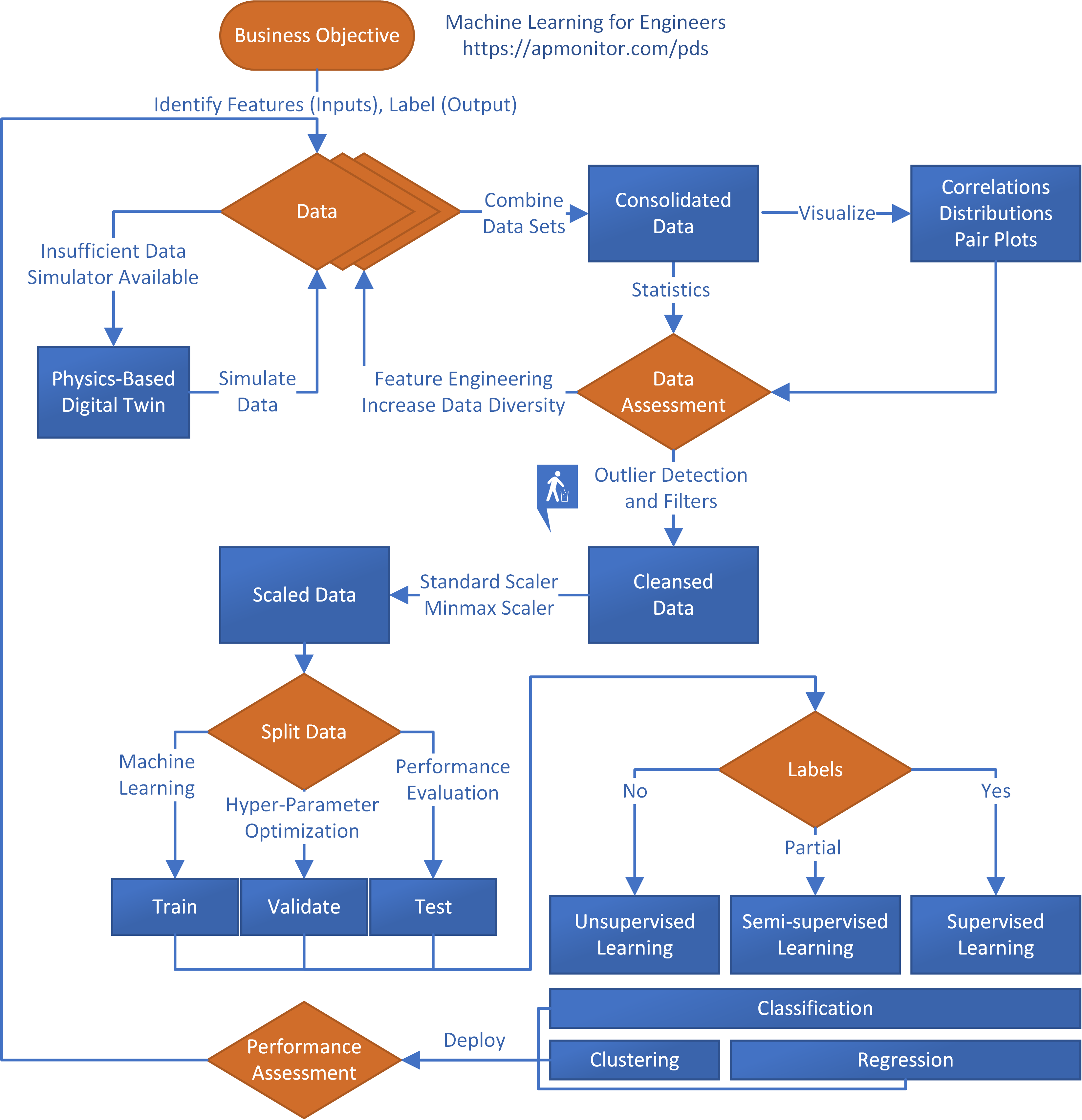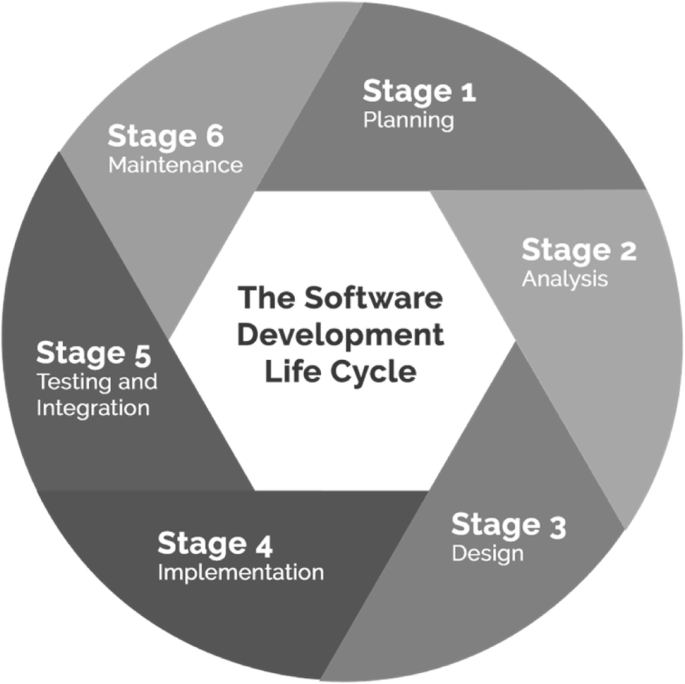All Categories
Featured
Table of Contents
- – Machine Learning Engineer Vs Software Engineer...
- – The 9-Minute Rule for Aws Certified Machine Le...
- – The 8-Minute Rule for Machine Learning Bootca...
- – 9 Easy Facts About What Is A Machine Learning...
- – An Unbiased View of How To Become A Machine ...
- – How Software Engineering For Ai-enabled Syst...
- – Machine Learning Engineer: A Highly Demanded...
Some people assume that that's dishonesty. If somebody else did it, I'm going to use what that person did. I'm compeling myself to assume via the possible solutions.
Dig a little deeper in the mathematics at the start, so I can develop that foundation. Santiago: Finally, lesson number seven. This is a quote. It claims "You have to recognize every detail of an algorithm if you desire to utilize it." And after that I state, "I think this is bullshit recommendations." I do not think that you have to recognize the nuts and bolts of every algorithm prior to you use it.
I've been using semantic networks for the lengthiest time. I do have a feeling of exactly how the gradient descent works. I can not clarify it to you now. I would need to go and check back to actually obtain a far better instinct. That does not suggest that I can not address things making use of neural networks? (29:05) Santiago: Trying to require people to assume "Well, you're not going to succeed unless you can clarify each and every single detail of exactly how this works." It returns to our sorting example I assume that's simply bullshit suggestions.
As an engineer, I've worked with many, several systems and I have actually utilized several, lots of things that I do not understand the nuts and screws of how it works, also though I comprehend the influence that they have. That's the final lesson on that thread. Alexey: The amusing point is when I think of all these collections like Scikit-Learn the algorithms they utilize inside to implement, for instance, logistic regression or something else, are not the same as the algorithms we examine in device knowing classes.
Machine Learning Engineer Vs Software Engineer Things To Know Before You Get This
Also if we attempted to find out to obtain all these basics of maker understanding, at the end, the formulas that these collections use are various. ? (30:22) Santiago: Yeah, absolutely. I assume we require a whole lot more pragmatism in the market. Make a lot more of an impact. Or concentrating on delivering value and a little bit much less of purism.

I typically speak to those that want to function in the market that desire to have their effect there. I do not dare to talk regarding that due to the fact that I don't understand.
Yet right there outside, in the sector, materialism goes a long means for certain. (32:13) Alexey: We had a comment that stated "Feels more like motivational speech than speaking about transitioning." Maybe we ought to switch. (32:40) Santiago: There you go, yeah. (32:48) Alexey: It is a great inspirational speech.
The 9-Minute Rule for Aws Certified Machine Learning Engineer – Associate
Among the important things I wanted to ask you. I am taking a note to discuss becoming better at coding. But initially, let's cover a couple of things. (32:50) Alexey: Allow's begin with core devices and structures that you require to find out to in fact transition. Allow's state I am a software engineer.
I know Java. I understand SQL. I know just how to utilize Git. I know Bash. Perhaps I recognize Docker. All these things. And I become aware of artificial intelligence, it seems like a cool point. What are the core tools and frameworks? Yes, I watched this video and I get convinced that I don't require to obtain deep right into math.
What are the core devices and frameworks that I require to find out to do this? (33:10) Santiago: Yeah, definitely. Great question. I assume, primary, you should start learning a little bit of Python. Given that you currently understand Java, I do not believe it's going to be a massive shift for you.
Not because Python is the same as Java, yet in a week, you're gon na obtain a great deal of the differences there. You're gon na have the ability to make some development. That's number one. (33:47) Santiago: After that you get particular core tools that are going to be utilized throughout your whole occupation.
The 8-Minute Rule for Machine Learning Bootcamp: Build An Ml Portfolio
That's a library on Pandas for data control. And Matplotlib and Seaborn and Plotly. Those three, or among those 3, for charting and displaying graphics. You obtain SciKit Learn for the collection of equipment learning algorithms. Those are tools that you're going to have to be making use of. I do not suggest simply going and finding out about them out of the blue.
Take one of those training courses that are going to start introducing you to some troubles and to some core ideas of machine knowing. I don't bear in mind the name, but if you go to Kaggle, they have tutorials there for cost-free.
What's excellent concerning it is that the only demand for you is to understand Python. They're mosting likely to offer a trouble and tell you exactly how to use choice trees to resolve that certain problem. I believe that process is exceptionally powerful, due to the fact that you go from no device learning history, to understanding what the trouble is and why you can not resolve it with what you understand now, which is straight software program engineering techniques.
9 Easy Facts About What Is A Machine Learning Engineer (Ml Engineer)? Shown
On the other hand, ML designers specialize in structure and deploying maker knowing models. They focus on training models with data to make predictions or automate jobs. While there is overlap, AI engineers manage more varied AI applications, while ML designers have a narrower emphasis on artificial intelligence formulas and their useful application.

Artificial intelligence engineers focus on establishing and deploying artificial intelligence models into manufacturing systems. They work with engineering, making certain designs are scalable, reliable, and incorporated right into applications. On the other hand, information researchers have a more comprehensive role that consists of data collection, cleansing, exploration, and building versions. They are typically in charge of removing insights and making data-driven choices.
As organizations progressively adopt AI and artificial intelligence modern technologies, the need for proficient professionals grows. Device understanding designers deal with innovative tasks, add to development, and have affordable incomes. Nevertheless, success in this field needs constant understanding and staying up to date with developing technologies and methods. Machine knowing roles are typically well-paid, with the potential for high gaining capacity.
ML is basically different from typical software application growth as it concentrates on training computers to find out from data, instead of programming explicit regulations that are performed systematically. Uncertainty of end results: You are probably made use of to composing code with foreseeable results, whether your function runs once or a thousand times. In ML, nevertheless, the end results are much less certain.

Pre-training and fine-tuning: How these versions are trained on huge datasets and after that fine-tuned for details tasks. Applications of LLMs: Such as text generation, sentiment evaluation and info search and access. Documents like "Focus is All You Need" by Vaswani et al., which presented transformers. On-line tutorials and training courses concentrating on NLP and transformers, such as the Hugging Face course on transformers.
An Unbiased View of How To Become A Machine Learning Engineer
The capacity to manage codebases, merge changes, and solve conflicts is just as important in ML development as it remains in conventional software projects. The skills created in debugging and testing software application applications are extremely transferable. While the context may alter from debugging application reasoning to identifying concerns in data handling or version training the underlying principles of systematic investigation, hypothesis screening, and iterative refinement coincide.
Machine knowing, at its core, is greatly reliant on stats and likelihood concept. These are essential for recognizing how algorithms discover from data, make predictions, and review their performance.
For those curious about LLMs, a comprehensive understanding of deep discovering designs is useful. This includes not only the technicians of semantic networks yet also the architecture of certain designs for different use situations, like CNNs (Convolutional Neural Networks) for photo processing and RNNs (Reoccurring Neural Networks) and transformers for sequential data and natural language processing.
You should be aware of these problems and find out strategies for determining, reducing, and communicating regarding bias in ML models. This includes the possible effect of automated choices and the ethical implications. Numerous versions, specifically LLMs, call for substantial computational sources that are usually given by cloud platforms like AWS, Google Cloud, and Azure.
Building these skills will not just help with a successful shift right into ML yet likewise guarantee that designers can add efficiently and responsibly to the development of this dynamic field. Theory is crucial, but absolutely nothing beats hands-on experience. Beginning functioning on tasks that allow you to apply what you have actually discovered in a sensible context.
Develop your tasks: Start with simple applications, such as a chatbot or a text summarization device, and progressively raise intricacy. The field of ML and LLMs is swiftly evolving, with new advancements and technologies emerging on a regular basis.
How Software Engineering For Ai-enabled Systems (Se4ai) can Save You Time, Stress, and Money.
Sign up with neighborhoods and discussion forums, such as Reddit's r/MachineLearning or area Slack channels, to go over ideas and obtain advice. Participate in workshops, meetups, and seminars to get in touch with various other specialists in the area. Contribute to open-source jobs or compose article concerning your discovering journey and jobs. As you acquire knowledge, start trying to find opportunities to integrate ML and LLMs right into your work, or look for new duties concentrated on these technologies.

Possible use situations in interactive software program, such as recommendation systems and automated decision-making. Comprehending uncertainty, basic analytical steps, and chance distributions. Vectors, matrices, and their function in ML algorithms. Mistake reduction techniques and gradient descent clarified simply. Terms like model, dataset, features, labels, training, reasoning, and validation. Data collection, preprocessing methods, version training, examination processes, and deployment factors to consider.
Decision Trees and Random Forests: Intuitive and interpretable designs. Matching problem types with appropriate models. Feedforward Networks, Convolutional Neural Networks (CNNs), Recurrent Neural Networks (RNNs).
Constant Integration/Continuous Release (CI/CD) for ML operations. Model monitoring, versioning, and performance tracking. Discovering and resolving adjustments in design efficiency over time.
Machine Learning Engineer: A Highly Demanded Career ... Can Be Fun For Everyone

Training course OverviewMachine discovering is the future for the next generation of software application professionals. This program offers as an overview to artificial intelligence for software application engineers. You'll be introduced to 3 of one of the most appropriate parts of the AI/ML self-control; overseen understanding, neural networks, and deep knowing. You'll understand the differences between typical programming and artificial intelligence by hands-on advancement in monitored discovering before constructing out intricate dispersed applications with neural networks.
This program acts as a guide to maker lear ... Program More.
Table of Contents
- – Machine Learning Engineer Vs Software Engineer...
- – The 9-Minute Rule for Aws Certified Machine Le...
- – The 8-Minute Rule for Machine Learning Bootca...
- – 9 Easy Facts About What Is A Machine Learning...
- – An Unbiased View of How To Become A Machine ...
- – How Software Engineering For Ai-enabled Syst...
- – Machine Learning Engineer: A Highly Demanded...
Latest Posts
The Best Websites To Practice Coding Interview Questions
How To Master Leetcode For Software Engineer Interviews
How To Break Down A Coding Problem In A Software Engineering Interview
More
Latest Posts
The Best Websites To Practice Coding Interview Questions
How To Master Leetcode For Software Engineer Interviews
How To Break Down A Coding Problem In A Software Engineering Interview